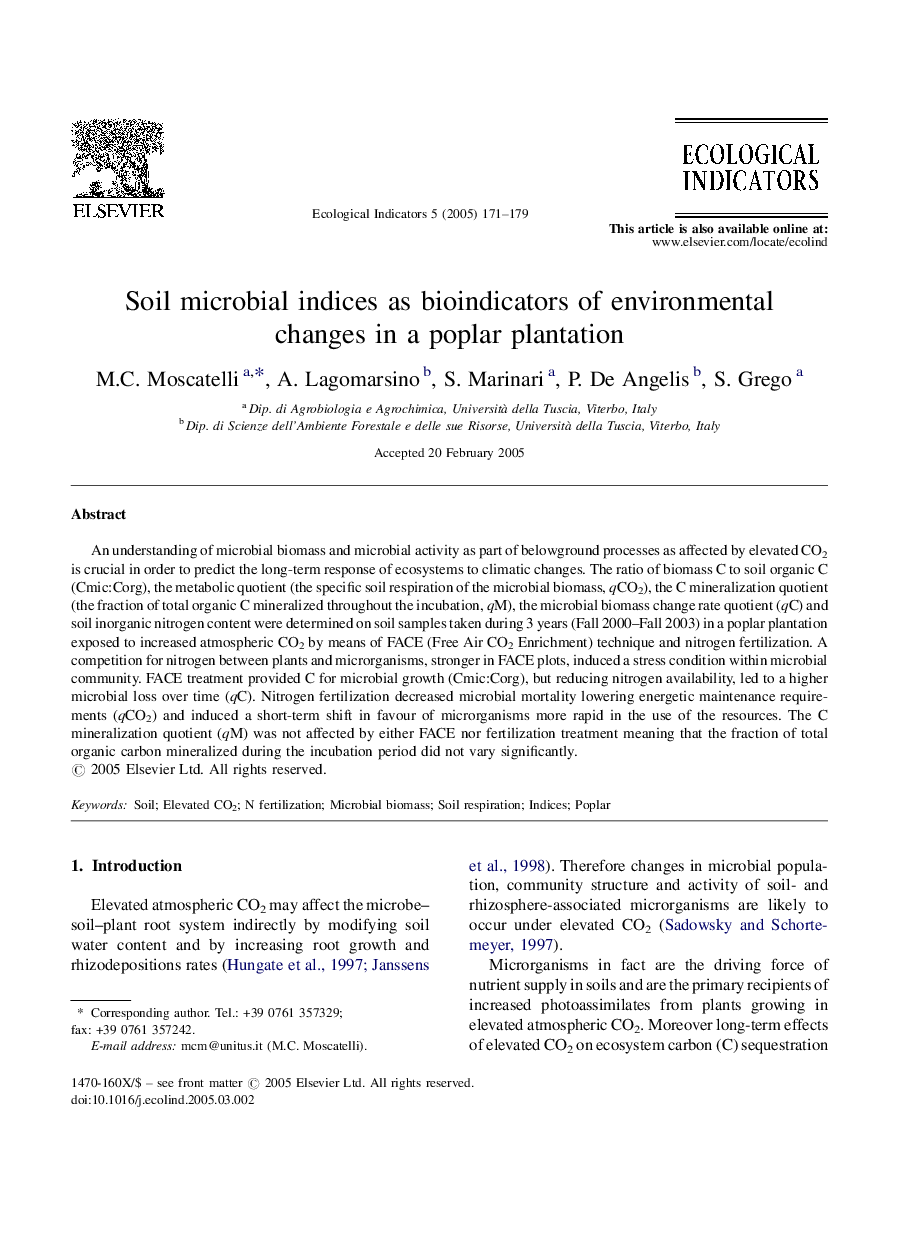| Article ID | Journal | Published Year | Pages | File Type |
|---|---|---|---|---|
| 9443195 | Ecological Indicators | 2005 | 9 Pages |
Abstract
An understanding of microbial biomass and microbial activity as part of belowground processes as affected by elevated CO2 is crucial in order to predict the long-term response of ecosystems to climatic changes. The ratio of biomass C to soil organic C (Cmic:Corg), the metabolic quotient (the specific soil respiration of the microbial biomass, qCO2), the C mineralization quotient (the fraction of total organic C mineralized throughout the incubation, qM), the microbial biomass change rate quotient (qC) and soil inorganic nitrogen content were determined on soil samples taken during 3 years (Fall 2000-Fall 2003) in a poplar plantation exposed to increased atmospheric CO2 by means of FACE (Free Air CO2 Enrichment) technique and nitrogen fertilization. A competition for nitrogen between plants and microrganisms, stronger in FACE plots, induced a stress condition within microbial community. FACE treatment provided C for microbial growth (Cmic:Corg), but reducing nitrogen availability, led to a higher microbial loss over time (qC). Nitrogen fertilization decreased microbial mortality lowering energetic maintenance requirements (qCO2) and induced a short-term shift in favour of microrganisms more rapid in the use of the resources. The C mineralization quotient (qM) was not affected by either FACE nor fertilization treatment meaning that the fraction of total organic carbon mineralized during the incubation period did not vary significantly.
Related Topics
Life Sciences
Agricultural and Biological Sciences
Ecology, Evolution, Behavior and Systematics
Authors
M.C. Moscatelli, A. Lagomarsino, S. Marinari, P. De Angelis, S. Grego,
